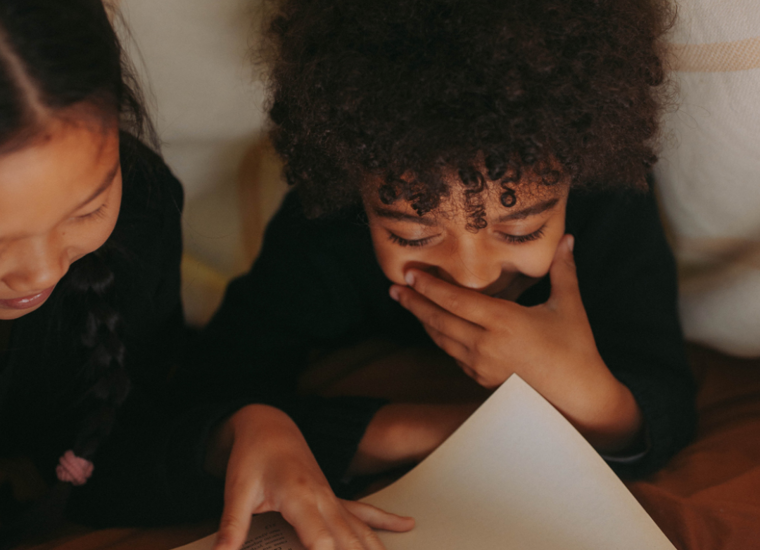Dissolves the boundaries between fantasy and reality
Lygia Bojunga is a Brazilian author who is part of a tradition of magical realism and fantasy-filled storytelling of South America. In her word of mouth-style narratives, characterised by a strongly dramatic presence, anything can happen. Bojunga enables the reader to enter directly into the dreams of her principal characters and to share in their experiences.
 Photo: Stefan Tell
Photo: Stefan TellQuick facts
The jury’s motivation
Lygia Bojunga dissolves the boundaries between fantasy and reality with all the exhilarating ease of a child at play. In her dramatic and word of mouth-style narratives the reader is always enabled to enter directly into the dreams and fantasies that her principal characters draw on for survival. In a deeply original way she fuses playfulness, poetic beauty and absurd humour with social critique, a love of freedom and a strong empathy with the vulnerable child.
Bojunga is part of the tradition of magical realism and fantasy-filled storytelling of South America, a tradition she has developed and perfected. In her word of mouth-style narratives, characterised by a strongly dramatic presence, anything can happen. In a deeply original way she fuses playfulness, poetic beauty and absurd humour with social critique, a love of freedom and a strong empathy with the vulnerable child. Fantasy often functions as a way of dealing with distressing personal experiences, or as an escape from harsh reality. Bojunga enables the reader to enter directly into the dreams of her principal characters and to share in their experiences.
Having begun her career as an actress (she has also written a number of plays), she published her first children's book, Os Colegas, in 1972 (The Companions, 1989). Here, as in Angélica (1975), the main characters are animals endowed with human characteristics, a device that highlights the comic elements in the narrative. These early works already reveal a psychological focus: Angélica is about a pig that wants to be a swallow, but gradually learns to accept its own identity. A Bolsa Amarela (1976), highlights a similar theme, this time with a young girl in the leading role, whereas A Casa da Madrinha (1978) presents the utopian dreams and fantasies of an abandoned street child. Two of her books deal with mourning and grief: her masterpiece, Corda Bamba (1979), is about a young girl who manages to come to terms with the death of her parents through her fantasies, and in O Meu Amigo Pintor, 1987 (My Friend the Painter, 1991), a young boy reflects on the inexplicable suicide of an adult friend.
In books such as Seis Vezes Lucas (1995), Bojunga writes in an altogether more realistic style. In her work Retratos de Carolina (2002), her continual experimentation as a writer has led her in a new direction: she allows us to follow the main character from childhood through to adulthood in a narrative partly written in the form of a meta-novel. Bojunga uses this device to extend the boundaries of literature for children and young people in an attempt, as she herself puts it, to make room both for herself and the characters she has created in one single house, "a house of my own invention".
Bojunga's work has been translated into a number of languages including English, French, German, Italian, Spanish, Norwegian, Swedish, Icelandic, Bulgarian, Czech and Hebrew. She has received a number of awards, including the Jabuti Award (1973), the prestigious Hans Christian Andersen Award (1982), and the Rattenfänger Literaturpreis (1986).
Offsets the serious with playfulness and absurd humour
This text was written in 2004 by members of the award jury.
Brazilian author, began her writing career under the name of Lygia Bojunga Nunes. Born in Pelotas on 26 August 1932, she grew up on a farm. At the age of eight she moved to Rio, where in 1951 she became an actress in a theatre group that toured the rural areas of Brazil. Her reaction to the widespread illiteracy she encountered prompted her to become one of the founders of a school for poor rural children which she helped to run for five years. She spent a long time working in radio and television before making her debut as a children's writer in 1972.
In the continent that has become known for its magical realism and fantasy-filled storytelling, Brazilian children's literature is renowned for a marked erosion of the boundaries between fantasy and reality. Lygia Bojunga is a writer who has developed and perfected this tradition. For her, magic permeates the everyday: an everyday where desires grow so heavy that one literally cannot lift them, where safety pins and umbrellas talk, as do spinning tops and balls. The lives of animals are as varied and as vulnerable as those of any human being. Imperceptibly, what is palpably real transforms into something new, not so much another world as a world inside the sensory, where the boundaries of what is possible are blurred and easy to transcend. In Bojunga's work, sorrow coexists with comfort, tranquil happiness with breathtaking adventures. At the heart of this poetic fantasy is the child, often abandoned and lonely, always sensitive and possessed of a vivid imagination. Neither death nor betrayal are taboo, yet just around almost every corner, healing is at hand. She paints her pictures in lyrical, colourful prose, and no matter how bitter loneliness may feel, there is always the smile that expresses empathy with the young and is never sentimental.
The child's point of view is always paramount in Bojunga's texts. She views the world with the imaginative gaze of a child at play. Here, everything is possible: her principal characters can conjure up a horse they can ride away on, or draw a door on the wall which they can walk through just moments later. Fantasy often functions as a way of dealing with distressing personal experiences: when the main character in Corda Bamba (1979) uses her rope to walk into an extraordinary house with a number of closed doors on the other side of the street, what is really taking place is a coming-to-terms with grief after the sudden death of her parents. In A Casa da Madrinha (1978), we quickly realise that Alexander's amazing experiences in his search for his godmother's out-of-the-way house are actually the concrete expression of an abandoned street child's blissful yearnings for happiness and security. It is a story with many parallels in Astrid Lindgren's South Wind Meadow (Sunnanäng). The psychological elements of Bojunga's imagination also appear in her animal stories: when the armadillo Viktor in O Sofá Estampado (1980) gets nervous, he starts to cough and scratch, until he presses himself down through the sofa and literally into his own childhood.
Magical realism and acute psychological observation are combined with a passion for democracy and social justice. Bojunga, who started writing when Brazil was still under the iron grip of dictatorship, is something of a subversive. This was easier to express in children's literature, given that, in Bojunga's own words, "Generals don't read children's books." In her work we encounter fighting cocks with their brains sewn up with thick thread, and peacocks with thought filters that can be removed with corkscrews. The winds of freedom blow freely throughout Bojunga's books, alongside a recurring critique of gender inequality. Yet Bojunga never preaches: she constantly offsets the serious with playfulness and absurd humour. Rachel's ballooning dreams in A Bolsa Amarela (1976) are literally burst by a safety pin: the remains are transformed into paper kites that she allows to fly away in the wind.
Bojunga (who often performs dramatic monologues for audiences) has the ability of the live storyteller to engage the reader from the very first page. She has also written plays, and often employs a theatrical narrative style. In one of her books, Angélica (1975), she actually includes a complete play. The storyline is not always the most important element in her work: occasionally, as in oral storytelling, diverse events are linked together and the main character can disappear from focus. The emphasis lies instead with the narrative itself, its humorous and poetic overtones, and in the remarkable feeling of liberation that arises from the fact that anything can happen. The unique beauty of these books is also augmented by the sophisticated way in which Bojunga allows colours to express emotions. This is perhaps most obviously apparent in O Meu Amigo Pintor (1987), (My Friend the Painter, 1991, a book which was also adapted for the stage), which describes how the main character, a boy, deals with his grief over the painter's death with the help of colours. A bell rings yellow, then gradually stops and becomes completely white. Yellow happens to be Bojunga's favourite colour, associated with a joie de vivre that has been a constant theme ever since her first children's book, Os Colegas (1972) (The Companions, 1989).
Bojunga sometimes opts to remain in reality, where she also reveals her sharp psychological focus: Seis Vezes Lucas (1995), like the title short story in the earlier Tchau (1984), deals with infidelity, marital disputes and divorce from the point of view of the powerless, yet ever hopeful, child. In her choice of subjects, Bojunga throws herself fearlessly into the world of adults, justifiably reliant on her genuine ability to portray and make concrete what goes on in people's minds in a storyline which is easy to grasp.
Like Hans Christian Andersen, with whose work her own shares much in common, Bojunga skilfully maintains a fine balance between the humorous and the serious. However, in her book Retratos de Carolina (2002), it is the serious that holds sway. Her continual experimentation as a writer has led her in a new direction. In this narrative, partly in the form of a meta-novel, she allows us to follow the main character from childhood through to adulthood. Bojunga uses this device to extend the boundaries of literature for children and young people, and fulfils her stated ambition in the introduction to the book to make room both for herself and the characters she has created in one single house, "a house of my own invention".
Bojunga's work has been translated into a number of languages, including English, French, German, Italian, Spanish, Norwegian, Swedish, Icelandic, Bulgarian, Czech and Hebrew. She has won a number of awards, including the Jabuti Award (1973), the prestigious Hans Christian Andersen Award (1982), and the Rattenfänger Literaturpreis (1986).

Discover our laureates
The Astrid Lindgren Memorial Award is awarded to authors, illustrators and narrators, but also to people or organizations that work to promote reading.
Find out more about the laureates
Children have the right to great stories
To lose yourself in a story is to find yourself in the grip of an irresistible power. A power that provokes thought, unlocks language and allows the imagination to roam free. The Astrid Lindgren Memorial Award was created in 2002 by the Swedish government to promote every child’s right to great stories.
Find out more about the award